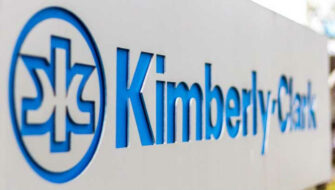Kimberly-Clark in Niagara Falls
You may be entitled to receive compensation. Mesothelioma and lung cancer victims & their families have been awarded over $1 million+ from easy access to funds. Call us today to apply.
Over the past 20 years, we've helped 1,000s of families claim the compensation they deserve with no upfront costs to them.

Kimberly-Clark operated a paper mill in Niagara Falls, New York, from the early 1920s until the 1970s. The mill made coated printing paper, Kleenex tissues and Kotex feminine care products.
Former Kimberly-Clark Niagara Falls workers have filed lawsuits against the company alleging that they developed asbestos diseases as a result of exposure at the plant.
Belluck & Fox has successfully represented many former pulp and paper mill workers diagnosed with mesothelioma, lung cancer and asbestosis. We have documents showing where asbestos was used at Kimberly-Clark, which companies supplied the asbestos and how workers were exposed.
If you worked at Kimberly-Clark in Niagara Falls and have been diagnosed with an asbestos disease, count on Belluck & Fox to demand maximum compensation for you and your family. Learn how we can help during a free consultation.
Asbestos Exposure at Kimberly-Clark
Table of Contents
Asbestos was used in a variety of ways at Kimberly-Clark production facilities. Former Kimberly-Clark workers who have been diagnosed with mesothelioma or another asbestos disease are encouraged to speak with one of our knowledgeable New York mesothelioma attorneys at Belluck & Fox, LLP as soon as possible.
Steam System
Kimberly-Clark was located on Packard Road in Niagara Falls. The 700,000-square-foot facility consisted of several interconnected two- and five-story concrete and masonry buildings that were constructed between 1923 and 1974.
The two main buildings at the Kimberly-Clark factory were Mill 1 and Mill 2. When the factory was originally built, the boiler plant — or Mill 1 — housed four coal-powered boilers. The boilers in Mill 1 produced steam that was piped to Mill 2 for heating, hot water and production processes, including drying.
This entire network of thermal equipment — including boilers, pipes, pumps, steam traps and valves — was covered with asbestos insulation. Asbestos gaskets were used in boilers, valves and flanges, and asbestos packing material was used in pumps. Over the factory’s decades of operation, asbestos-containing insulation, gaskets and packing deteriorated and were regularly removed and replaced. Asbestos insulation on equipment was also removed and replaced in order to perform maintenance and repairs.
This was dusty work that exposed workers to airborne asbestos fibers. Workers who directly handled asbestos-containing materials — including insulators, boiler workers, pipefitters, millwrights and maintenance mechanics — inhaled and ingested fibers. Tradespeople who worked in the vicinity of asbestos work, such as electricians, laborers and carpenters, were also exposed to the dangerous carcinogen.
Many years after they were exposed, these workers are at risk of developing mesothelioma, lung cancer and asbestosis. Belluck & Fox has successfully represented many former paper mill workers diagnosed with an asbestos disease. If you worked at Kimberly-Clark in Niagara Falls and have mesothelioma, we can help.
Equipment
Paper mills use industrial presses and dryers as part of the pulp dewatering process. In the press section, water is removed by mechanical pressure applied through a system of nips aided by press felts that support the sheet and absorb the pressed water. At some mills, these felts were made with asbestos. As they wore down, asbestos felts released airborne fibers that machine operators and other factory workers inhaled and ingested.
In the dryer section of paper machines, the remaining water is evaporated as the paper contacts a series of steam-heated cylinders. These cylinders use dryer fabric that in the past may have contained asbestos. Drying machines also had numerous asbestos-containing gaskets on the inlets, flanges and exhaust. Since drying machines are connected to the factory’s steam system, associated pipes, valves and pumps were insulated with asbestos. Workers who maintained and repaired paper mill dryers may have been exposed to asbestos.
Learn more about asbestos exposure at paper mills.
Asbestos in Kimberly-Clark Paper Products
In addition to using asbestos in building materials, some paper plants used asbestos as a raw material in their products. Kimberly-Clark has been accused of using asbestos in Kleenex tissues, which were made at the company’s Niagara Falls factory.
Although it has denied using asbestos in Kleenex, Kimberly-Clark admits that it purchased asbestos from Union Carbide for use as a sandpaper backing made until the 1970s. According to a memo, Union Carbide touted asbestos as a softening agent in facial tissues and towels. The memo said that “Clark values softness” — seemingly a reference to Kimberly-Clark.
Studies Link Paper Mill Work to Asbestos Diseases
Several studies have found an association between working at paper mills and asbestos diseases such as mesothelioma.
- Former workers at the Conwed plant in Cloquet, Minnesota, were screened by the Minnesota Department of Health. Findings showed that 27 percent of the workers and their spouses had health abnormalities consistent with asbestos exposure.
- Italian researchers tested dust samples and machinery in a factory that made paper mill dryers and found asbestos fibers in the equipment. Three cases of malignant pleural mesothelioma were documented among the factory workers, as well as cases of lung disease and pleural plaques.
- A review of health risk among pulp and paper mill workers published in the American Journal of Industrial Medicine found an increased risk of lung cancer and malignant mesothelioma in maintenance workers.
- The Journal of Occupational and Environmental Medicine studied a cohort of nearly 63,000 male workers employed for at least one year in the pulp and paper industry in 13 countries. Thirty-six percent of workers were classified as exposed to asbestos. Several pleural cancer deaths in maintenance workers were documented.
- A Swedish study of pulp and paper industry workers found “certain” or “probable” expose to asbestos among 70 percent of workers.
The research is clear: Pulp and paper mill workers are at risk of developing deadly cancers caused by exposure to asbestos. Asbestos is the only known cause of mesothelioma, which may not develop until 15 to 60 years after asbestos exposure. Workers exposed decades ago remain at risk of asbestos disease today.
Legal Help for Asbestos Victims in the Pulp and Paper Industry
Belluck & Fox has helped many former pulp and paper workers diagnosed with mesothelioma recover maximum compensation for their illness. We have recovered more than $1 billion for our clients and earned a reputation as one of the country’s top mesothelioma law firm.
If you worked at Kimberly-Clark in Niagara Falls and have an asbestos disease, our lawyers will fight for you and your family with the full strength of our award-winning firm. To get started, please contact us now.
Sources:
- The New York Times: Merger News (Dec. 31, 1971)
- C&S Engineers: Remedial Investigation Work Plan, Former Mill No. 2
- Los Angeles Times: Asbestos Touted for Paper Use, ’60s Memo Says
- IntechOpen: Fundamentals of Paper Drying
- American Journal of Industrial Medicine: Health effects of working in pulp and paper mills
- Journal of Occupational and Environmental Medicine: Exposure to asbestos and lung and pleural cancer mortality among pulp and paper industry workers
- American Journal of Industrial Medicine: Pleural mesotheliomas and asbestos exposure in the pulp and paper industries
- La Medicina del Lavoro: Assessment of asbestos exposure, mortality study, and health intervention in workers formerly exposed to asbestos in a small factory making drying machines for textile finishing and the paper mill industry in Pistoia, Italy
- Minnesota Department of Health: Information Sheet for Former Conwed Workers
- Lockwood Trade Journal Company: Paper Trade Journal, 1921
- Paper: Devoted to the Manufacture, Sale and Use of Pulp and Paper, Volume 27
Other Asbestos Companies in New York
- Degraff Memorial Hospital
- American Laundry In Rochester New York
- Clarkson University
- Fairchild Republic Co
- General Motors Chevrolet Tarrytown
- Seneca Army Depot Asbestos Exposure
- Northern Steel Corporation
